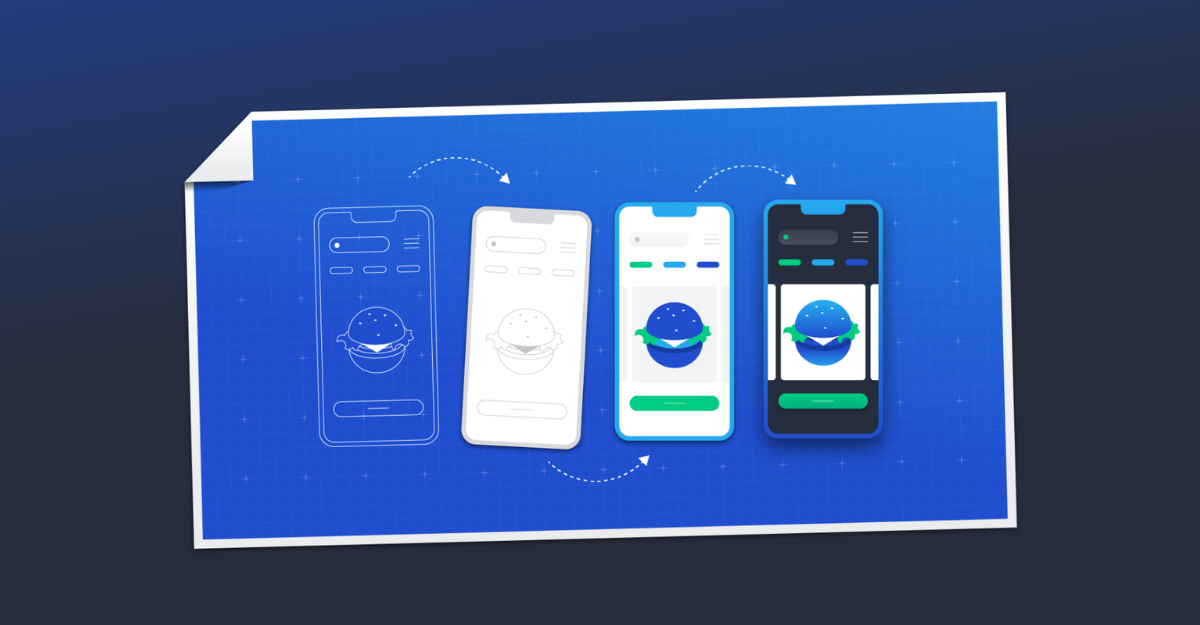
How to build an MVP: a simple and reliable manual
Definition of MVP
In the world of startups and product development, the term “MVP” often takes center stage. But what exactly is an MVP, and why is it essential for your journey to success? Let’s demystify the definition of MVP.
MVP stands for “Minimum Viable Product.” It’s a concept rooted in the Lean Startup methodology, coined by Eric Ries. At its core, an MVP is the most simplified version of your product or service that still offers value to your target audience.
Here’s a breakdown of the elements within this definition:
1.Minimum: This indicates the bare minimum features and functionality necessary to address a specific problem or need. The emphasis is on simplicity, ensuring that you don’t overcomplicate your initial offering.
2.Viable: Your MVP should be functional and capable of delivering real value. It might not have all the bells and whistles of the final product, but it must satisfy a genuine need for your users.
3.Product: While the term “product” is commonly used, an MVP can also apply to services, software, or any solution that solves a problem. It’s the tangible or intangible result of your work.
An MVP serves several critical purposes:
- Testing Assumptions: It allows you to validate your assumptions about your product’s viability.
- Gathering Feedback: By putting your MVP in the hands of users, you can collect valuable feedback that shapes the future of your product.
- Reducing Risk: Developing a full-scale product without testing the waters can be risky and costly. An MVP minimizes that risk.
Importance of MVP in Product Development
In the ever-evolving landscape of product development, the Minimum Viable Product (MVP) stands as a crucial cornerstone. Its significance cannot be overstated, as it plays a pivotal role in the success of any project. Here, we delve into the importance of MVP in product development.
- Risk Mitigation: Developing a full-scale product without testing its viability can be a costly and risky endeavor. An MVP serves as a low-risk entry point, allowing you to validate your concept before making substantial investments.
- User-Centered Development: MVP puts the user at the forefront. By releasing a minimal version of your product to early adopters, you can gather invaluable feedback and refine your offering based on real user experiences.
- Faster Time-to-Market: Traditional product development cycles can be lengthy. MVPs expedite the process by focusing on the essential features, enabling quicker launches, and a competitive edge.
- Cost-Efficiency: MVPs are cost-effective. They save resources by streamlining development efforts and avoiding unnecessary features. This frugality is especially important for startups and small businesses.
- Adaptability: The tech landscape evolves rapidly. MVPs allow you to adapt and pivot based on user feedback and changing market conditions. This flexibility is vital in staying relevant and meeting users’ evolving needs.
- Market Testing: MVPs are your litmus test for market acceptance. They provide real-world data that informs whether your product has the potential to succeed or if adjustments are needed.
- Iterative Improvement: MVPs are not one-off creations; they begin a cycle of constant improvement. Regular iterations based on user feedback ensure your product remains aligned with user expectations.
- Competitive Advantage: You gain a competitive edge by getting to market faster and continually refining your product. This agility enables you to respond to market changes and customer preferences more rapidly than competitors with traditional development cycles.
Why Build an MVP?
In the realm of product development, the concept of building a Minimum Viable Product (MVP) has gained significant prominence. But why is building an MVP so crucial? Here are compelling reasons to invest in an MVP for your project:
- Risk Mitigation: Developing a full-fledged product without knowing if it will resonate with the market is a risky proposition. An MVP allows you to test your concept with minimal investment, reducing the risk of a costly failure.
- User-Centric Approach: An MVP places users at the heart of your development process. By launching a simplified version of your product, you can gather real user feedback, ensuring that your final product aligns with their needs and preferences.
- Cost-Efficiency: Building an MVP is cost-effective. It helps conserve resources by focusing on the core features, allowing you to allocate your budget more efficiently.
- Speed to Market: Traditional product development cycles can be lengthy. MVPs enable you to bring a product to market faster, which is essential in seizing opportunities and staying ahead of the competition.
- Iterative Improvement: An MVP is just the beginning. It marks the start of an iterative process where you continuously enhance your product based on user feedback. This ensures your product remains relevant and competitive.
- Market Validation: MVPs serve as a litmus test for your product’s viability. They provide real-world data that validates whether your idea has market potential or if adjustments are necessary.
- Adaptability: The business landscape is dynamic. MVPs allow you to pivot and adapt quickly, responding to changes in the market and the evolving needs of your customers.
- Competitive Advantage: Building an MVP and refining it based on user insights gives you a competitive edge. You can respond to market shifts and customer preferences more nimbly than competitors with lengthier development cycles.
Planning Your MVP
Before diving into the development of your Minimum Viable Product (MVP), thorough planning is essential. Your MVP is the critical first step in bringing your product to life and ensuring its success. Here’s a roadmap for planning your MVP effectively:
- Define Your Objectives: Start by setting clear and specific goals. What problem does your MVP solve? Who is your target audience? What key metrics will determine its success? Having well-defined objectives is the foundation of a successful MVP.
- Identify Core Features: Keep it simple. Identify the absolute minimum features your product needs to fulfill its primary purpose. Prioritize these features to ensure they are included in your MVP.
- Market Research: Conduct in-depth market research to understand your competition, target audience, and market trends. This information will help you fine-tune your MVP to meet real user needs.
- User Personas: Develop user personas to gain insights into your target audience’s behavior, preferences, and pain points. This will guide feature selection and user experience design.
- Create a Prototype: Before diving into development, create a prototype or mockup of your MVP. Use wireframing tools to design the user interface and test the flow and usability.
- Choose Development Approach: Decide whether you’ll develop the MVP in-house, outsource it, or use no-code platforms. Consider your budget, timeline, and technical requirements.
- Set a Realistic Timeline: Establish a development timeline that takes into account your project’s complexity, resource availability, and market demand. Keep in mind that an MVP should be developed relatively quickly to seize opportunities.
- Testing Strategy: Plan how you will test your MVP. Define your target audience for the initial release, gather feedback, and outline how you will iterate and improve based on this feedback.
- Metrics for Success: Determine the key performance indicators (KPIs) that will measure your MVP’s success. Common KPIs include user engagement, conversion rates, and user satisfaction.
- Marketing and Launch Plan: Don’t forget to plan how you will introduce your MVP to the market. Consider marketing channels, pricing strategies, and user acquisition tactics.
11.Scalability: While your MVP is minimal, plan for future scalability. Consider how the product will evolve as you receive feedback and expand your user base.
Effective planning is the backbone of a successful MVP. By following this roadmap, you can ensure that your MVP is well-prepared to address user needs, gather valuable feedback, and pave the way for your product’s success.
Designing Your MVP
Designing your Minimum Viable Product (MVP) is a crucial step in the product development process. An MVP’s design not only influences user experience but also plays a significant role in achieving your project’s goals. Here’s a blueprint for effectively designing your MVP:
- User-Centered Approach: Start by understanding your target audience. Create user personas to empathize with your users and design the MVP with their needs and preferences in mind.
- Prioritize Key Features: Identify the core features that are essential to solving the primary problem. Focus on functionality rather than frills. Keep the design minimal and intuitive.
- User Interface (UI) Design: Develop a clean and user-friendly UI. Ensure that the MVP’s interface is easy to navigate, visually appealing, and aligned with your brand identity.
- Prototyping: Create prototypes or wireframes to visualize the MVP’s layout and user flow. Prototyping allows you to test and refine the design before development begins.
- Responsive Design: With the increasing use of mobile devices, it’s essential to ensure that your MVP’s design is responsive, providing a seamless experience across various screen sizes.
- Usability Testing: Conduct usability tests to gather feedback on the MVP’s design. This feedback will help you identify and rectify any design-related issues before the MVP is launched.
- Iterative Design: Embrace an iterative design approach. As you gather user feedback, be prepared to make design improvements. Continuous refinement is a hallmark of successful MVP development.
- Consistency: Maintain design consistency throughout the MVP. This includes consistent branding, color schemes, typography, and interaction patterns.
- Performance Optimization: Pay attention to performance optimization to ensure that your MVP loads quickly and functions smoothly, enhancing the user experience.
- Accessibility: Design your MVP with accessibility in mind, ensuring that it can be used by a diverse audience, including individuals with disabilities.
Launching Your MVP
The moment you’ve been waiting for in your product development journey has arrived – it’s time to launch your Minimum Viable Product (MVP). The MVP launch is a pivotal stage that can significantly impact the success of your project. Here’s a strategic approach to ensure a successful MVP launch:
- Define Clear Objectives: Begin by reiterating your launch objectives. What do you hope to achieve with the MVP release? Define key performance indicators (KPIs) to measure success.
- Target Audience: Identify your primary target audience for the initial release. Tailor your marketing and communication strategies to reach this specific group effectively.
- Marketing Plan: Develop a comprehensive marketing plan that outlines how you’ll create awareness and generate interest in your MVP. Utilize various marketing channels, including social media, content marketing, email marketing, and paid advertising, as appropriate.
- Pricing Strategy: Determine whether your MVP will be free or have a pricing model. If you charge for it, establish competitive pricing that reflects its value and appeals to your target audience.
- Feedback Mechanism: Implement a system for collecting user feedback. Make it easy for users to provide their insights, and have a structured process for analyzing and incorporating this feedback into future iterations.
- Monitoring and Analytics: Set up analytics tools to track user engagement, conversion rates, and other relevant metrics. This data will help you evaluate the MVP’s performance and make data-driven decisions.
- Quality Assurance: Prior to the launch, rigorously test your MVP to identify and resolve any last-minute issues. Ensure that it functions as intended and offers a positive user experience.
- Launch Announcement: Create a buzz around your MVP by announcing the launch date well in advance. Consider creating teaser campaigns or countdowns to generate anticipation.
- User Onboarding: Ensure that your MVP has a smooth onboarding process, guiding users through the product’s core features and benefits.
- Continuous Improvement: Post-launch, be prepared to continuously iterate and improve your MVP based on user feedback and data analysis. The launch is just the beginning of your product’s journey.
- Communication Channels: Stay accessible to your users. Provide clear channels for users to report issues, ask questions, and request assistance.
Scaling Your MVP
So, you’ve successfully launched your Minimum Viable Product (MVP) and gained traction in the market. What’s next? It’s time to scale your MVP and take it to the next level. Here’s a guide on how to effectively scale your MVP for maximum impact:
- Analyze User Data: Start by diving deep into the user data you’ve collected since the MVP launch. Identify user behaviors, preferences, and pain points. This data will be the cornerstone of your scaling strategy.
- Feature Expansion: Use the insights from user data to determine which additional features will enhance your MVP. Prioritize features that align with user needs and preferences, but be cautious not to stray from your core value proposition.
- Scalable Infrastructure: Ensure that your technical infrastructure can handle increased user demand. Scaling may require upgrades to your servers, databases, and other essential systems to maintain a seamless user experience.
- User Feedback Loop: Continue to gather user feedback and iterate your product. Implement feedback loops and agile development practices to make informed improvements.
- Marketing and User Acquisition: Invest in marketing strategies to acquire new users and retain existing ones. Leverage user testimonials, case studies, and success stories to build trust and attract a broader audience.
- Pricing and Monetization: Revisit your pricing strategy. As you scale, consider introducing premium features or exploring new pricing models to increase revenue without alienating existing users.
- User Support and Onboarding: Enhance your customer support and onboarding processes to accommodate a growing user base. Provide clear resources and assistance to help users navigate your expanded MVP.
- Team and Resources: Expand your team and resources as needed to support growth. Ensure you have the necessary manpower, expertise, and budget to fuel your MVP’s expansion.
- Performance Monitoring: Continuously monitor the performance and stability of your MVP. Proactively address any issues to maintain a high-quality user experience.
- Market Diversification: Consider expanding into new markets or audience segments that align with your product’s value proposition. Tailor your marketing and features to suit these diverse user groups.
- Strategic Partnerships: Explore partnerships and collaborations that can help your MVP reach new audiences or provide additional value to existing users.
Conclusion
In conclusion, building an mvp app development using a simple and reliable manual is the key to turning your innovative ideas into successful products or businesses. By defining clear goals, prioritizing essential features, and embracing user feedback, you can create a strong foundation for growth and long-term success in the competitive world of product development.



